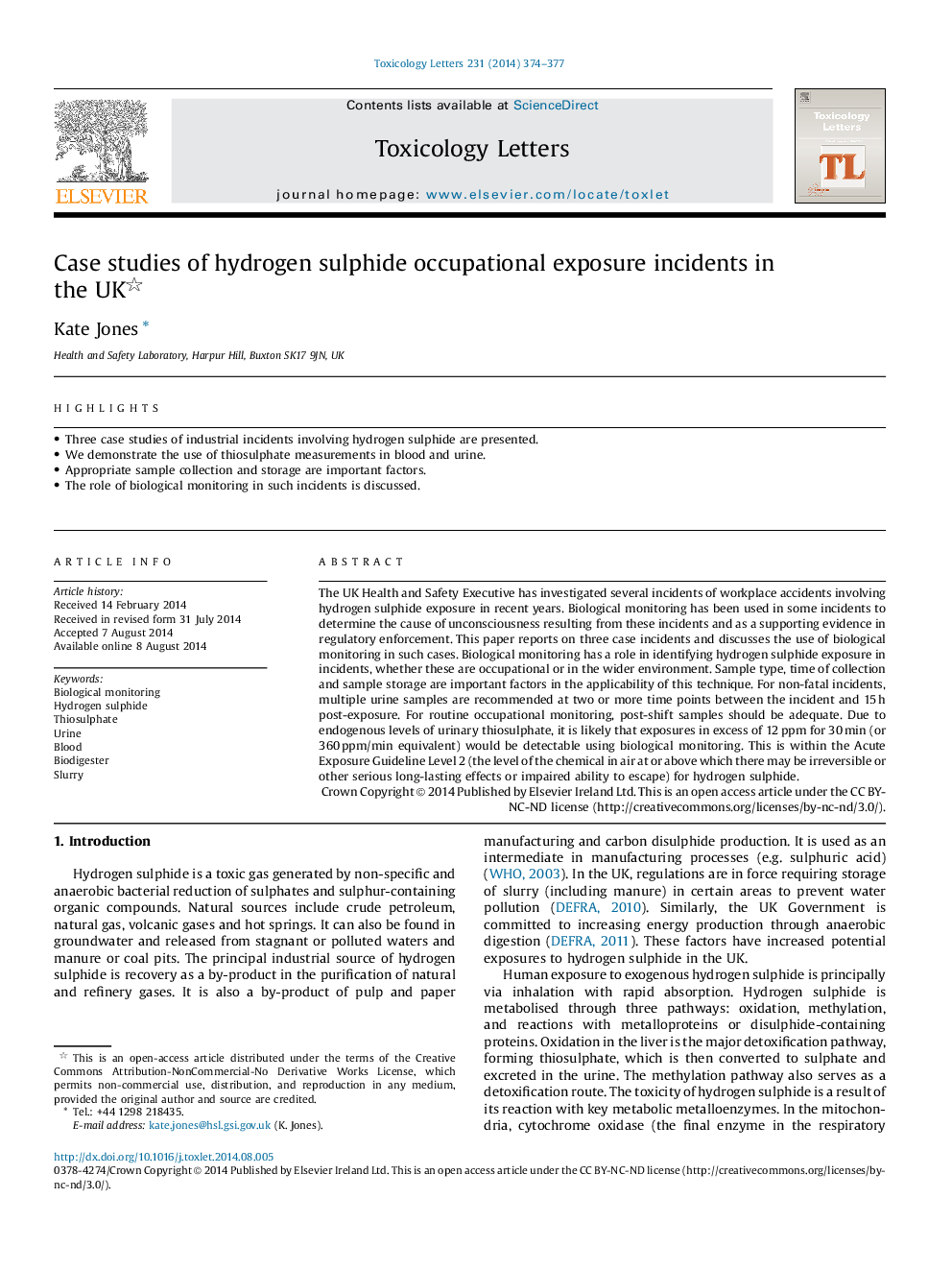| کد مقاله | کد نشریه | سال انتشار | مقاله انگلیسی | نسخه تمام متن |
|---|---|---|---|---|
| 5859968 | 1133160 | 2014 | 4 صفحه PDF | دانلود رایگان |
- Three case studies of industrial incidents involving hydrogen sulphide are presented.
- We demonstrate the use of thiosulphate measurements in blood and urine.
- Appropriate sample collection and storage are important factors.
- The role of biological monitoring in such incidents is discussed.
The UK Health and Safety Executive has investigated several incidents of workplace accidents involving hydrogen sulphide exposure in recent years. Biological monitoring has been used in some incidents to determine the cause of unconsciousness resulting from these incidents and as a supporting evidence in regulatory enforcement. This paper reports on three case incidents and discusses the use of biological monitoring in such cases. Biological monitoring has a role in identifying hydrogen sulphide exposure in incidents, whether these are occupational or in the wider environment. Sample type, time of collection and sample storage are important factors in the applicability of this technique. For non-fatal incidents, multiple urine samples are recommended at two or more time points between the incident and 15Â h post-exposure. For routine occupational monitoring, post-shift samples should be adequate. Due to endogenous levels of urinary thiosulphate, it is likely that exposures in excess of 12Â ppm for 30Â min (or 360Â ppm/min equivalent) would be detectable using biological monitoring. This is within the Acute Exposure Guideline Level 2 (the level of the chemical in air at or above which there may be irreversible or other serious long-lasting effects or impaired ability to escape) for hydrogen sulphide.
Journal: Toxicology Letters - Volume 231, Issue 3, 15 December 2014, Pages 374-377
